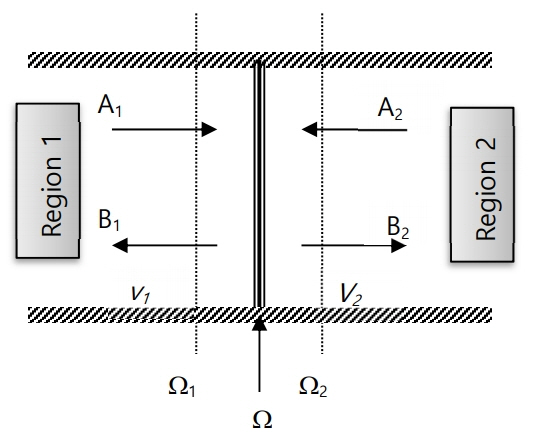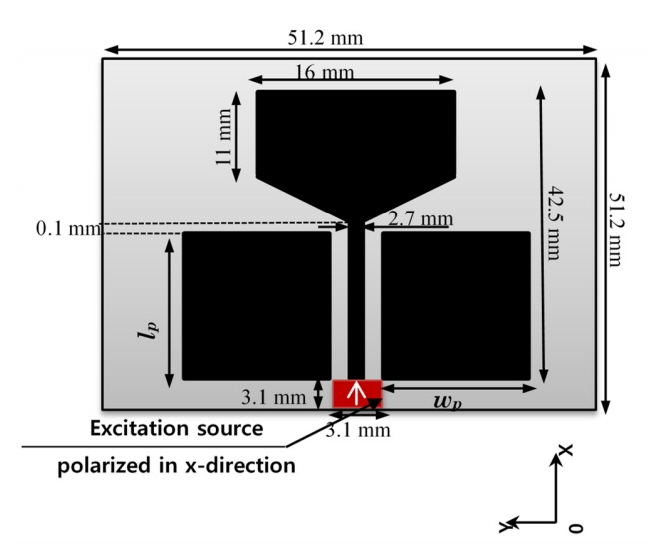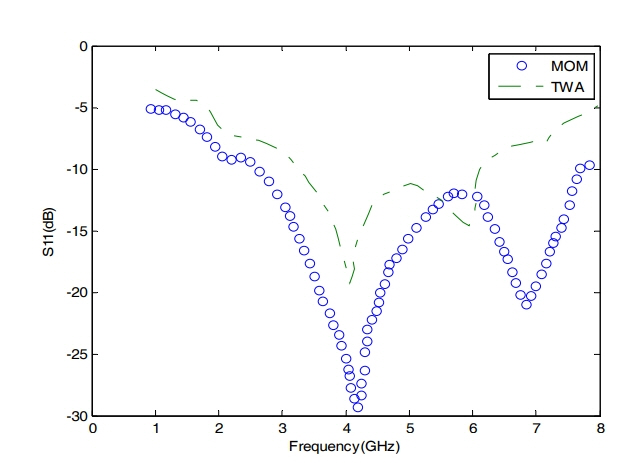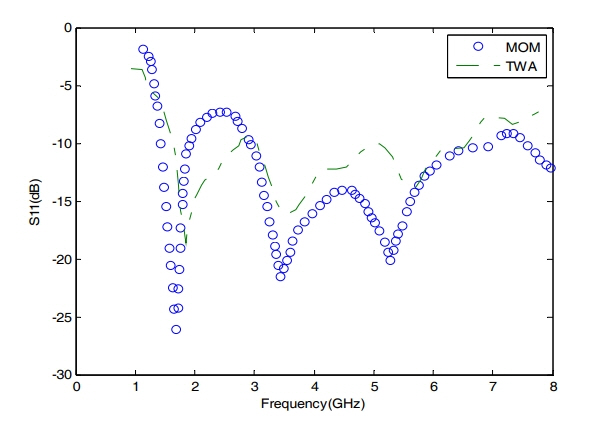1. J Rossignol, D Stuerga, G Bailly, A Harrabi, S Girard, and S Lall├®chere, "Visualisation of electromagnetic field in the vicinity of electronic circuit and effect of nanomaterial coating,"
Advanced Electromagnetics, vol. 6, no. 2, pp. 33ŌĆō39, 2017.

2. VP Silva Neto and AG DŌĆÖAssuncao, "Iterative full-wave analysis of Mandelbrot-inspired fractal patch antenna on textile substrate for UWB applications,"
International Journal of Antennas and Propagation, vol. 2017, article no. 4686315, 2017.


3. L Snehalatha, NP Pathak, and SK Manhas, "Reconfigurable multi-beam dual-band antenna based on Vee dipoles,"
Advanced Electromagnetics, vol. 7, no. 2, pp. 19ŌĆō24, 2018.

4. CM Dikmen, S Cimen, and G Cakir, "Planar octagonal-shaped UWB antenna with reduced radar cross section,"
IEEE Transactions on Antennas and Propagation, vol. 62, no. 6, pp. 2946ŌĆō2953, 2014.

5. Z Xu, B Ravelo, J Gantet, and N Marier, "PCB access impedances extraction method of in-situ integrated circuit,"
Advanced Electromagnetics, vol. 7, no. 3, pp. 108ŌĆō116, 2018.

6. S Nelaturi and NVSN Sarma, "CSRR based patch antenna for Wi-Fi and WiMAX applications,"
Advanced Electromagnetics, vol. 7, no. 3, pp. 40ŌĆō45, 2018.

7. KN Bocan, MH Mickle, and E Sejdic, "Tissue variability and antennas for power transfer to wireless implantable medical devices,"
IEEE Journal of Translational Engineering in Health and Medicine, vol. 5, pp. 1ŌĆō11, 2017.

8. A Barakat, A Allam, H Elsadek, AB Abdel-Rahman, RK Pokharel, and T Kaho, "Improved gain 60 GHz CMOS antenna with N-well grid,"
IEICE Electronics Express, vol. 13, no. 5, pp. 1ŌĆō6, 2016.

9. P Sumithra and D Thiripurasundari, "Review on computational electromagnetics,"
Advanced Electromagnetics, vol. 6, no. 1, pp. 42ŌĆō55, 2017.

10. L Gurel, "Higher-order techniques in computational electromagnetics [Book Review],"
IEEE Antennas and Propagation Magazine, vol. 58, no. 3, pp. 106ŌĆō107, 2016.

11. Z Peng, "Geometry-aware domain decomposition methods in high-fidelity electromagnetic design," In:
Proceedings of 2017 IEEE MTT-S International Conference on Numerical Electromagnetic and Multiphysics Modeling and Optimization for RF, Microwave, and Terahertz Applications (NEMO); Seville, Spain. 2017;pp 281ŌĆō283.

12. LJ Foged, L Scialacqua, F Saccardi, F Mioc, D Tallini, E Leroux, U Becker, JL Araque Quijano, and G Vecchi, "Innovative representation of antenna measured sources for numerical simulations," In:
Proceedings of 2014 IEEE Antennas and Propagation Society International Symposium (APSURSI); Memphis, TN. 2014.

13. MIM Ghazali, S Karuppuswami, A Kaur, and P Chahal, "3-D printed air substrates for the design and fabrication of RF components,"
IEEE Transactions on Components, Packaging and Manufacturing Technology, vol. 7, no. 6, pp. 982ŌĆō989, 2017.

14. R Hartansky, D Maga, and P Siroky, "Numerical modeling of moment method for antenna simulation,"
International Journal of Computing, vol. 2, no. 1, pp. 88ŌĆō91, 2014.


15. WC Gibson, The Method of Moments in Electromagnetics. Boca Raton, FL: CRC Press, 2014.
16. M Ayari, T Aguili, H Temimi, and H Baudrand, "An extended version of Transverse Wave Approach (TWA) for full-wave investigation of planar structures," Journal of Microwaves, Optoelectronics and Electromagnetic Applications (JMOe), vol. 7, no. 2, pp. 123ŌĆō138, 2008.
17. M Ayari, T Aguili, and H Baudrand, "New version of TWA using two-dimensional non-uniform fast Fourier mode transform (2D-NUFFMT) for full-wave investigation of microwave integrated circuits,"
Progress in Electromagnetics Research B, vol. 15, pp. 375ŌĆō400, 2009.

18. A Heldring, JM Tamayo, C Simon, E Ubeda, and JM Rius, "Sparsified adaptive cross approximation algorithm for accelerated method of moments computations,"
IEEE Transactions on Antennas and Propagation, vol. 61, no. 1, pp. 240ŌĆō246, 2012.

19. RF Harrington, Field Computation by Moment Methods. Piscataway, NJ: IEEE Press, 1993.
20. H Temimi, S Adjerid, and M Ayari, "Implementation of the discontinuous Galerkin method on a multi-story seismically excited building model," Engineering Letters, vol. 18, no. 1, article no. 3, 2010.
21. M Ayari, S Altowaijri, and Y El Touati, "Mutual coupling between antennas in periodic network using the advanced transverse wave approach for wireless applications," International Journal of Advanced and Applied Sciences, vol. 6, no. 1, pp. 99ŌĆō105, 2019.
22. S Altowaijri, M Ayari, and Y El Touati, "A novel image encryption approach for cloud computing applications,"
International Journal of Advanced Computer Science and Applications, vol. 9, no. 12, pp. 440ŌĆō445, 2018.


23. M Ayari, T Aguili, H Temimi, and H Baudrand, "On the use of anisotropic mesh technique (AMT) in transverse wave approach (TWA) for the EM analysis of microwave circuits in wireless applications," In:
Proceedings of 2009 Symposia and Workshops on Ubiquitous, Autonomic and Trusted Computing; Brisbane, Australia. 2009;pp 246ŌĆō251.

24. A Kashkool, S Yahya, H Al-Rizzo, A Al-Wahhamy, and AA Issac, "On the design and simulation of antennas on ultra-thin flexible substrates," Applied Computational Electromagnetics Society Journal, vol. 33, no. 7, pp. 798ŌĆō801, 2018.
25. M Ayari, T Aguili, and H Baudrand, "An EM simulation software based on transverse wave approach (TWA) for EM field modeling of planar structures," IJCSS (International Journal of Computer Science and Systems), vol. 1, no. 1, pp. 1ŌĆō12, 2009.
26. TC Mu, H Ogawa, and T Itoh, "Characteristics of multiconductor, asymmetric, slow-wave microstrip transmission lines,"
IEEE Transactions on Microwave Theory and Techniques, vol. 34, no. 12, pp. 1471ŌĆō1477, 1986.

















